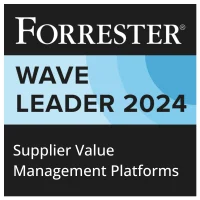Dynamic Discounting is a financial solution that enables buyers and suppliers to alter the payment terms of a transaction, allowing for early payment in exchange for a discount. This creates a win-win scenario where buyers can optimize their cash flow by taking advantage of early payment discount opportunities, while suppliers receive payments sooner in exchange for offering a discount on the invoice amount. Dynamic Discounting is typically facilitated through a digital platform, making it a flexible tool for managing working capital across the supply chain.
Key Benefits
– Enhanced Liquidity Management: Dynamic Discounting provides organizations with a tool to manage their working capital more effectively. By offering discounts for early payments, buyers can better control their cash flow, ensuring they have liquidity when needed while suppliers gain quicker access to cash, thereby enhancing their own financial stability.
– Reduced Supply Chain Risk: By providing suppliers with faster payments, Dynamic Discounting can reduce financial stress on suppliers, minimizing the risks of supply chain disruptions. Suppliers are less likely to encounter liquidity issues that might affect their ability to deliver goods or services on time.
– Cost Savings: Buyers who adopt Dynamic Discounting can achieve significant cost savings. The early payment discounts can be more attractive than the interest rate the buyer might earn on short-term investments, resulting in direct savings on procurement expenditures.
– Strengthened Supplier Relationships: Through Dynamic Discounting, buyers can enhance relationships with suppliers by providing them favorable payment terms. This fosters a partnership approach, potentially leading to more favorable terms in future negotiations and increased supplier loyalty.
– Improved Negotiation Leverage: The increased flexibility in payment terms allows buyers to negotiate better pricing or other favorable terms. Suppliers may be more willing to offer discounts or engage in long-term contracts knowing they have the option of receiving payments early.
Related Terms
– Enhanced Liquidity Management: Dynamic Discounting provides organizations with a tool to manage their working capital more effectively. By offering discounts for early payments, buyers can better control their cash flow, ensuring they have liquidity when needed while suppliers gain quicker access to cash, thereby enhancing their own financial stability.
– Reduced Supply Chain Risk: By providing suppliers with faster payments, Dynamic Discounting can reduce financial stress on suppliers, minimizing the risks of supply chain disruptions. Suppliers are less likely to encounter liquidity issues that might affect their ability to deliver goods or services on time.
– Cost Savings: Buyers who adopt Dynamic Discounting can achieve significant cost savings. The early payment discounts can be more attractive than the interest rate the buyer might earn on short-term investments, resulting in direct savings on procurement expenditures.
– Strengthened Supplier Relationships: Through Dynamic Discounting, buyers can enhance relationships with suppliers by providing them favorable payment terms. This fosters a partnership approach, potentially leading to more favorable terms in future negotiations and increased supplier loyalty.
– Improved Negotiation Leverage: The increased flexibility in payment terms allows buyers to negotiate better pricing or other favorable terms. Suppliers may be more willing to offer discounts or engage in long-term contracts knowing they have the option of receiving payments early.
References
For further insights into these processes, explore Zycus’ dedicated resources related to Dynamic Discounting:
- Unlocking Savings with Dynamic Discounting Solution: A Game-Changer for Accounts Payable
- Understanding Dynamic Discounting: A Smart Way to Boost Cash Flow- Zycus
- 5 Supplier Risk Assessment Pitfalls to Avoid
- Integrated Risk Management: A Playbook for Procurement
- Exploring Procurement Trends at Horizon 2023 with Hayde Romero Chavez
White Papers
Master the UK Procurement Act 2023: Ensure Compliance & Drive Procurement Excellence

Filter by
Compliant Invoicing
Compliant Invoicing refers to the process of generating, submitting, and managing invoices in adherence with legal, regulatory, and contractual requirements.
Continuity Plan
A Continuity Plan is an organized set of policies and procedures designed to ensure that a company’s essential operations can
Cost Modeling
Cost Modeling in procurement refers to the analysis and estimation of the total cost of ownership of a product or
Contract Audit
Contract Audit is a systematic evaluation of agreements and related documentation to ensure compliance with contractual terms, identify discrepancies, and
Procurement Cycle
The Procurement Cycle refers to the end-to-end process through which an organization identifies its needs, sources suppliers, negotiates contracts, places
Procurement Master Data Management
Procurement Master Data Management is the disciplined approach to managing core, consistent procurement information, including supplier, product, and contract data,






















































